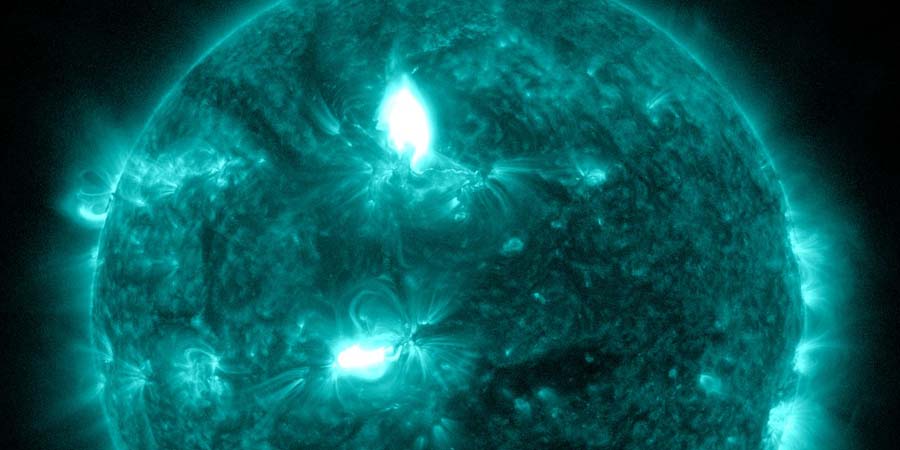X1.1 solar flare with earth-directed CME
Saturday, 23 March 2024 13:36 UTC

A complex eruption took place today which peaked at 01:33 UTC. The associated solar flare reached a peak of X1.1 (R3-strong) and came from sunspot region 3614. An unremarkable sunspot region north of sunspot region 3615. We say that the eruption is complicated because sunspot region 3615 flared at the same time but everything points to the solar flare and resulting eruption from sunspot region 3614 being stronger.
An impressive asymmetrical full halo coronal mass ejection (CME) was launched during the event. It is highly likely that the resulting coronal mass ejection will arrive at Earth despite the bulk of the CME heading more northwards. An impact is expected somewhere during the second half of Monday, 25 March. A clear CME impact signature is likely once the cloud arrives at the DSCOVR and ACE satellites. Geomagnetic storming up to the moderate G2 level, perhaps even the strong G3 level, can be expected which would equal a Kp-value of seven. This would be strong enough for aurora to be visible from places like England, Belgium, northern Germany, southern New Zealand and states in the United States like Utah and Colorado.
We also briefly reached the moderate S2 solar radiation storm threshold around 12 UTC. This creates issues with HF radio propagation at arctic latitudes and some satellites might experience infrequent single-event upsets.
The complex eruption between sunspot regions 3614 and 3615 that took place today at 01:33 UTC peaked at X1.1 It is associated with an asymmetrical full halo coronal mass ejection.
— SpaceWeatherLive (@_SpaceWeather_) March 23, 2024
It is highly likely that the resulting coronal mass ejection will arrive at Earth despite the bulk… pic.twitter.com/HZDZqZhRhK
Sunspot region 3615 remains a very complex sunspot region and more X-class activity is not impossible. It is crackling with non-eruptive M-class solar flares at the moment! Watch this sunspot region!
Did you know that you can easily analyze yourself just how complex sunspot region 3615 really is by visiting our sunspot region page? Just use the slider to switch back and forth between the region's magnetic layout and spot layout in visible light!
— SpaceWeatherLive (@_SpaceWeather_) March 23, 2024
Go check it out at… pic.twitter.com/4W06KLaow3
Thank you for reading this article! Did you have any trouble with the technical terms used in this article? Our help section is the place to be where you can find in-depth articles, a FAQ and a list with common abbreviations. Still puzzled? Just post on our forum where we will help you the best we can!
Latest news
Latest forum messages
Support SpaceWeatherLive.com!
A lot of people come to SpaceWeatherLive to follow the Sun's activity or if there is aurora to be seen, but with more traffic comes higher server costs. Consider a donation if you enjoy SpaceWeatherLive so we can keep the website online!

Space weather facts
| Last X-flare | 2025/03/28 | X1.1 |
| Last M-flare | 2025/04/15 | M1.2 |
| Last geomagnetic storm | 2025/04/15 | Kp6+ (G2) |
| Spotless days | |
|---|---|
| Last spotless day | 2022/06/08 |
| Monthly mean Sunspot Number | |
|---|---|
| March 2025 | 134.2 -20.4 |
| April 2025 | 124.1 -10.1 |
| Last 30 days | 124.7 -16.6 |


